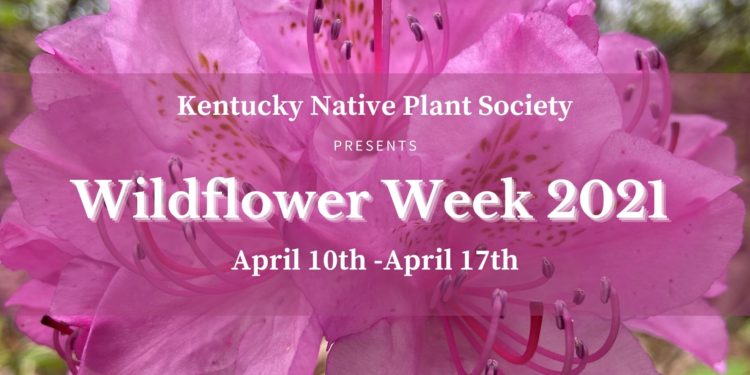
What is the Kentucky Plant Conservation Alliance (KYPCA)?
The Kentucky Plant Conservation Alliance (KYPCA) is a public private partnership of state and federal agencies, land managers, academic researchers, botanical gardens, conservation horticulturists, non-profits, conservation groups, private sector/consultants, community scientists, and volunteers committed to protecting native plants and natural communities of conservation concern with a central goal of preventing plant extinctions. The Office of Kentucky Nature Preserves and Kentucky Native Plant Society both recognized the need for a greater focus on rare plants and formed this alliance in 2016 in order to facilitate collaboration amongst existing conservation groups in the state by providing a framework to bring together the botanical community on focused priority plant conservation projects across the commonwealth. Priority projects are coordinated primarily by botanists and conservation staff at the Office of Kentucky Nature Preserves (OKNP) and collaborative meetings/field days/work days, outreach and volunteer building has been organized primarily by the Kentucky Native Plant Society (KNPS). The KYPCA is also linked with national, regional, and state alliance initiatives like the Georgia Plant Conservation Alliance that help us learn how to most effectively build plant conservation in Kentucky. We seek to prevent plant extinctions and preserve natural heritage for future generations by better leveraging resources of existing partnerships as well as building new partnerships to expand the collective capability of plant conservation in Kentucky.
Why do we need the KYPCA?
“Plants are the foundation of most life on Earth”
Kentucky is a very diverse state floristically, from the Cumberland Mountains in the East to the swamps of the coastal plain region in the west. The diversity is due to the topography and position on the landscape, the variety of geology and soils, the lack of recent glaciation and the history of natural disturbances such as fire and grazing. However, the landscape of Kentucky has changed dramatically since European settlement. Development and agriculture resulted in the dramatic loss of our old growth forests in the east, the grasslands of the interior plateau and the wetlands of the coastal plain. Over 2000 native plants have been documented in Kentucky. Unfortunately approximately 20% of our plants are rare, threatened or endangered. Kentucky has 11 federally listed species and an additional 40 or so plants are globally rare and declining. But there are still plant diversity hotspots scattered in remnant natural areas across the state. 65% of rare plants and 80% of rare natural communities in Kentucky are associated with grasslands, barrens or woodlands that need some level of disturbance (fire, browsing) or edaphic control (rock outcrops) to persist and all of our rare plants and communities need invasive species management. Only a handful of professional staff are able to devote their time to monitoring and managing these rare plants due to limited resources. In order to more effectively conserve these rare species and communities, we need to work collaboratively with partners and volunteers across the state to increase in situ and ex situ conservation of our rarest plants.


What kinds of projects does the KYPCA work on?
We work with our partners to prevent plant extinction and extirpation through in situ and ex situ conservation projects with a central goal of preventing local extinctions. Projects activities can include surveys, monitoring, direct management (invasive species removal/prescribed fire), restoration, seed banking, propagation, introductions, research and outreach. Projects are focused on rare plants that are in most need of immediate conservation action in order to prevent extinction from the state. The rare plant priority list was created by Kentucky Rare Plant Committee, continually updated, and is also the proposed list to add to the Kentucky State Wildlife Action Plan in the next few years. Plants are prioritized by rarity, lack of site protection or appropriate management, and other threats. Since rare plants are a part of larger natural communities, management and restoration of natural areas and partnerships with land managers is key to all projects. Some recent projects include rare plant propagation, native clover conservation, white haired goldenrod community science monitoring and management, roadside rare plant surveys, wood lily and Pine Barrens restoration, rare plant listing and prioritization working groups, and working with partners to add plants to Kentucky’s state wildlife action plan.
How does the KYPCA connect?
The KYPCA connects to partners by coordinating rare plant and community focused meetings and symposiums; coordinating workshops and field work days; providing updates to the KNPS monthly Ladyslipper newsletter and the OKNP quarterly newsletter; through OKNP, KYPCA, and KNPS social media pages; and through our websites www.kypca.knps.org and www.naturepreserves.ky.gov.
How to get involved?
If you would like to get involved with these efforts, contact us at KYPCA@knps.org and formally join our alliance! Please join the Kentucky Native Plant Society and sign up for the KNPS and OKNP newsletters to find out about volunteer opportunities and updates from recent projects. The KNPS is offering small grants to directly help with the KYPCA efforts such as rare plant propagation, and inventory/monitoring of natural areas. Please contact us if you are interested in applying for a grant. If you are an organization and are interested in formally joining, please send us your partnership logo and website info so we can add you to our partner page. Projects that we need particular help with include volunteer coordination, conservation horticulture projects, as well as monitoring and management projects on public and private lands.





















